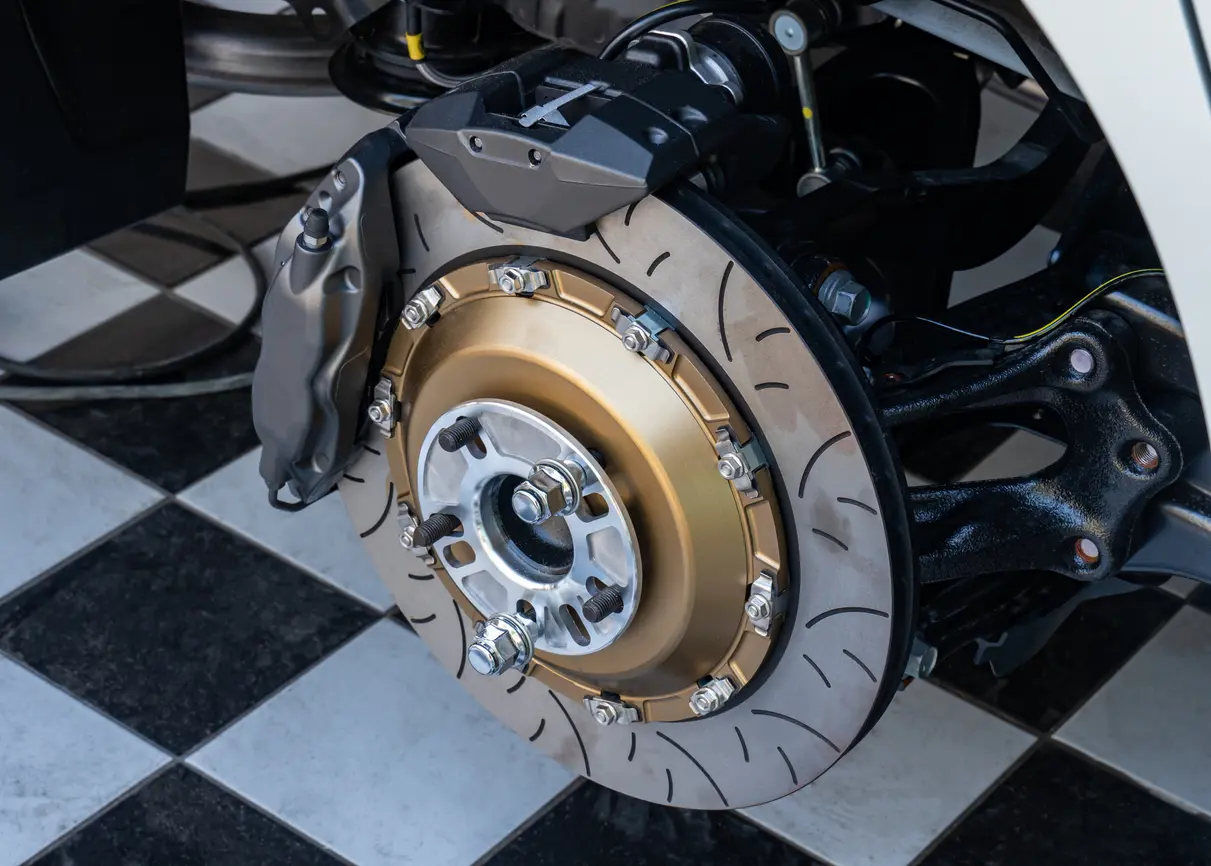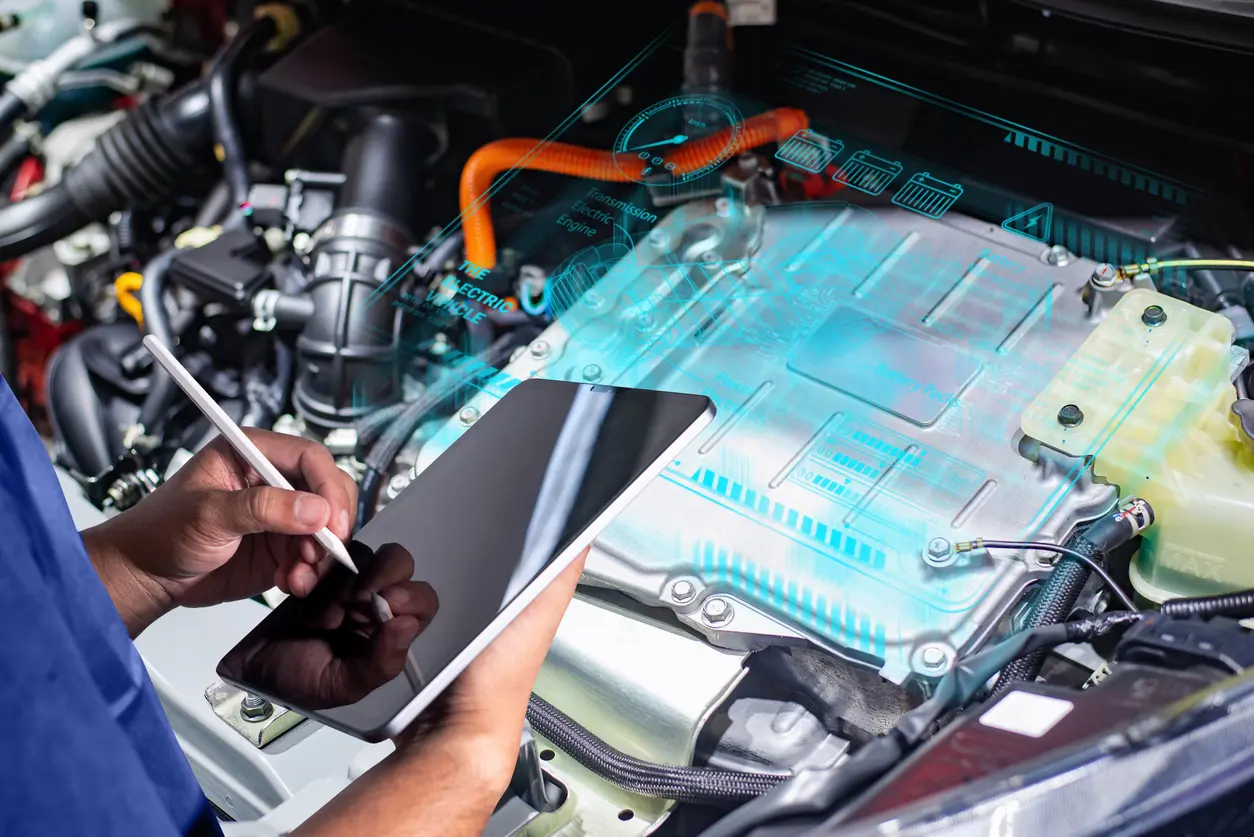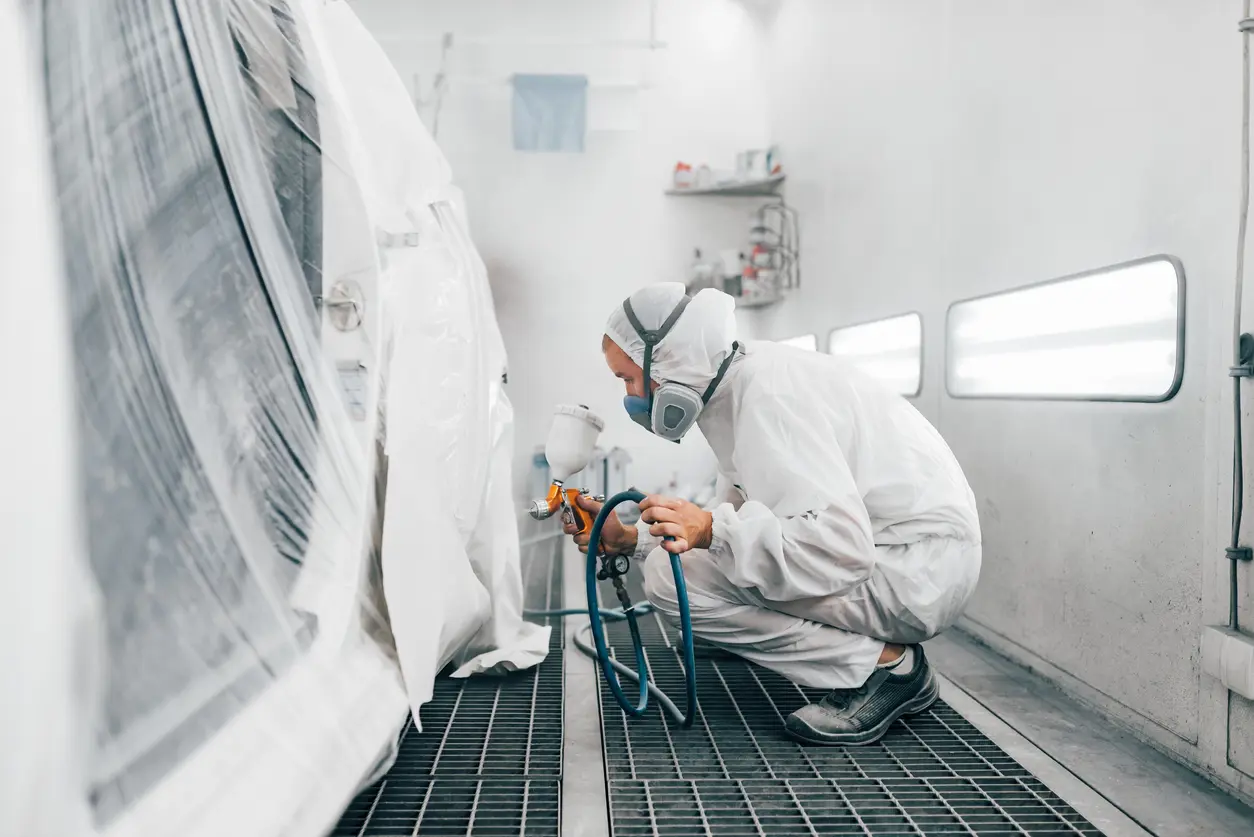What is a paint booth?
A paint booth is a controlled environment in which cars are given a new coat of colour. It keeps out most of the dust and other fine particles in the air that can affect the new coat’s ability to adhere to the vehicle.
Like the walls in your home, car exteriors require some repair and sanding plus a coat of primer during the preparation stage. Only then is colour applied.
Thus far, painting a gas-powered vehicle or an EV is about the same.
The risks of paint booths to EVs
Paint booths produce high temperatures to bake in the glazes and paints used on vehicles. While this is generally safe for a standard car, paint booths can cause serious problems for EVs.
Extreme heat and humidity can damage the electrical components of an EV, including the battery, which is highly sensitive to temperature changes. The heat of a regular paint booth oven puts thermal stress on the battery, possibly damaging EV battery cells and reducing their efficiency and lifespan. This can cause long-term damage.
EV motors are powered by high-voltage electrical systems. Introducing high heat near these systems can pose a significant safety risk. The likelihood of electrical shorts, fires, or other accidents increases when an EV is exposed to high temperatures during the repainting or refinishing process.
Your owner’s manual will list your EV’s temperature limits during painting and drying. A professional should know these limits before they work on your vehicle.
Painting alternatives
Before a professional repaints your EV, they need to prepare accordingly. Proper PPE must be worn at all times, and all static charges must be grounded. The vehicle should be turned off and no voltage should be connected during the repair/repainting process.
After these preparations, the expert can use one or more of these methods to paint the vehicle.
Bring down the temperature
A simple way to avoid damage to your EV by a standard paint booth is not to use one at all. Instead, your painter can use a low-temperature drying method, such as advanced infrared drying technology. A UV base coat can offer further protection during the drying process.
Keep an eye on the temperature
For refinishing projects, a temperature monitoring system can help ensure critical components, including the battery pack and high-voltage systems, remain within safe temperature ranges. This prevents overheating and any correlated issues.
Ensure proper ventilation
Proper ventilation is crucial when repainting or refinishing EVs. The painter’s workspace should have sufficient airflow so any fumes or heat generated can dissipate, reducing the risk of accidents.
Use different products
To limit how long your EV is exposed to heat, your painter may use immediate coat paints[AP1] or finishing paints. Polyester putties, high-performance fillers, and quick-drying finishing paints can be dried at low temperatures (including room temperature) for brief periods, minimizing your EV’s time in the heat.
Find a NexDrive FacilityEV paint maintenance tips
Follow these tips to help your EV’s coat stay in good shape:
- Wash your EV every two weeks.
- Wax your EV every three months.
- Avoid harsh chemical cleaners and use soft cleaning implements like microfibre cloths.
- Get paint chips and scratches repaired promptly.
For questions about repainting your EV, speak to an expert at a NexDrive service centre.
Find a NexDrive FacilityOther Resources

Why do electric car tires wear out so fast?
EV tires experience increased tread wear because of instant torque and unsprung weight. Learn why electric vehicles lead to worn-out tires and how to extend the lifespan of EV tires with proper maintenance.

Why regenerative braking is bad for your brake pads
Regenerative braking improves energy efficiency, but can cause brake pad issues because of reduced mechanical brake use. Learn how to maintain your brake system and prevent costly repairs in this article.

Does an EV need regular general maintenance?
Although EVs require less maintenance than gas-powered vehicles, they still need regular care. Learn about battery health, brake maintenance, and more here.
